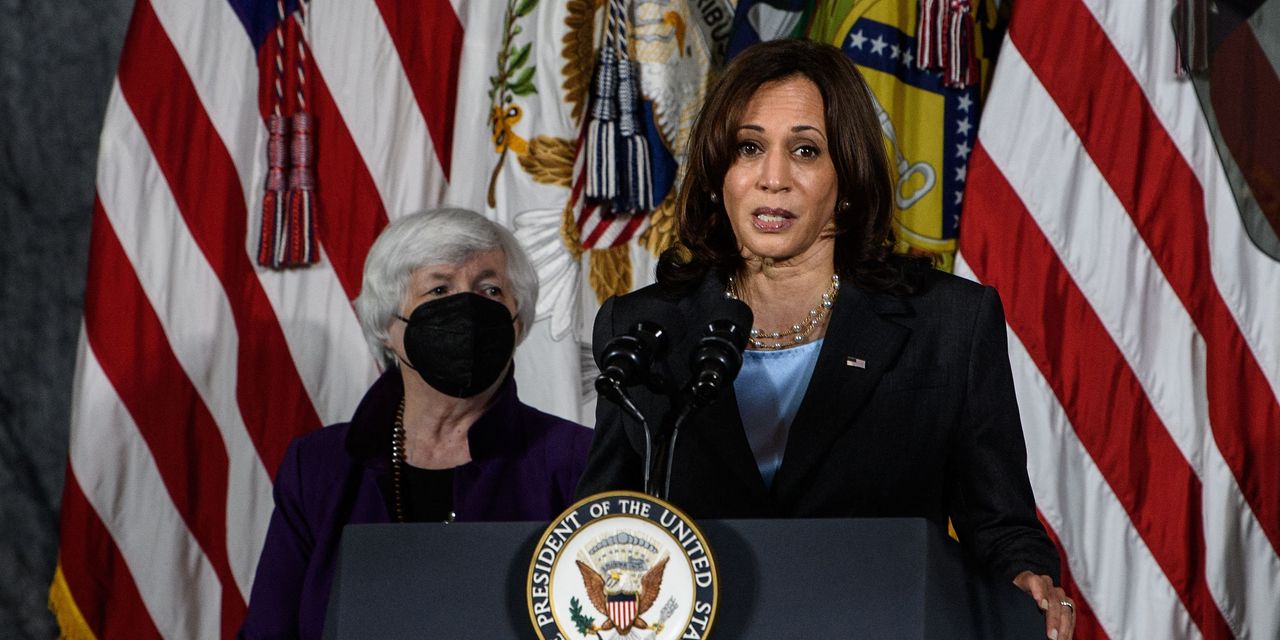The decline of U.S. worker power since the 1970s has led to economic inequality and stagnant wages, and supporting labor unions may be key to reversing that trend, the Biden administration said Monday.
President Joe Biden often calls himself the most pro-union president in American history, and on Monday — a week before Labor Day, and as many workers around the country are either on strike or poised to go on strike — the Treasury Department released a report about the benefits of unions and what the administration can do to help boost unionization.
Unions benefit the middle class in that they raise members’ wages by 10% to 15%, according to the report, which also said that unions help to improve wages and benefits of nonunion workers, affecting the wellbeing of many families and communities. All of that chips away at inequality, including racial and gender wage gaps, the report said.
“Today’s unions benefit all demographic groups,” Treasury Secretary Janet Yellen said during a call with reporters Monday. “Black men, who have the highest union-membership rates of any demographic groups [13%, vs. 10.1% overall], have also been particularly hit by the trends experienced by the middle class as a whole. They therefore may be particularly poised to benefit from unionization.”
The first report of its kind from the Treasury Department is just one part of the administration’s effort to encourage pro-union practices, policies and laws, said Vice President Kamala Harris, who joined the news conference.
“Trickle-down economics benefited American corporations and the wealthiest, but not really the workers,” said Harris, who is chair of the White House Task Force on Worker Organizing and Empowerment.
In 18 out of 21 types of occupations, union members’ weekly wages are higher than those of nonunion members, according to Bureau of Labor Statistics data cited in the Treasury report. The exceptions are three types of occupations that are typically nonunion: management; business and financial; and computer and mathematics.
Besides raising wages, unions have helped improve worker safety. For example, after the passage of the union-backed Occupational Safety and Health Act of 1970, the rate of nonfatal work-related injuries and illnesses from 1972 to 2018 fell fourfold from 11 cases to 3 cases per 100 full-time workers, the report said, citing BLS data.
Unions have also contributed to improving healthcare benefits, retirement and more, the report said. Those things lead to overall worker wellbeing, which can help fuel productivity, according to the report.
“Taken together, these findings challenge arguments that unions hold back growth,” Yellen said.
Opponents of unions typically have argued that they stifle economic growth because they can hinder businesses and therefore have a negative effect on hiring.
As for concrete steps the administration plans to take to encourage pro-union practices by companies, or at least discourage anti-union behavior, the report mentioned possibly using the tax code.
“The Treasury Department will continue to explore changes to the tax code to discourage anti-union campaigning and/or encourage employer neutrality/non-interference in organizing campaigns,” the report said.
Department staff declined to elaborate when a reporter on the call asked for specifics.
Other steps and actions the administration has taken or plans to take that are outlined in the report:
- It has increased the budget of the National Labor Relations Board.
- Nearly 80,000 federal workers have joined a union since the Office of Personnel Management started working with agencies to ensure that workers are aware of their union rights in the past couple of years.
- It is encouraging support for the creation of union jobs through preferences and requirements on federal grants.
- It will support the passage of the Protecting the Right to Organize (PRO) Act, which among other things would penalize companies for violating workers’ right to organize. The PRO Act has so far been introduced in Congress three times but has failed to advance in the Senate. The administration is also backing the Public Sector Freedom to Negotiate Act, which would extend collective-bargaining rights to millions of local and state public employees who don’t currently have them.
From the archives (March 2021): PRO Act, called ‘most important labor legislation in several generations,’ passes House
Read the full article here











